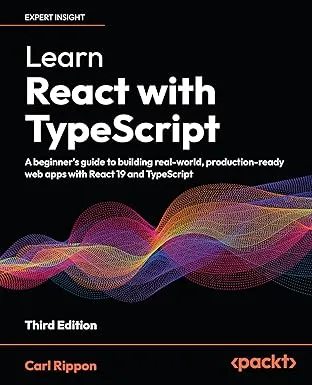React Children with TypeScript
The React children prop allows components to be composed together and is a key concept for building reusable components. Visually, we can think of it as a hole in the component where the consumer controls what is rendered. This post covers different approaches to strongly-typing this powerful and flexible prop with TypeScript.

Using the FC type
There is a standard React type, FC, that we can use on arrow function components. FC stands for Function Component, and it aliases a type called FunctionComponent.
Here’s an example:
type Props = { title: string,};const Page: React.FC<Props> = ({ title, children,}) => ( <div> <h1>{title}</h1> {children} </div>);FC is a generic type that takes in the specific type for all the component props. In the example above, we passed in a Props type alias containing a title prop. Alternatively, an interface could be used to define Props.
Notice that children isn’t defined in Props. Instead, it is already defined in the FC type. This is nice if you know this fact, but it might be a bit confusing if you don’t.
Explicitly defining the children prop type
If we explicitly define the children prop type, we have several different options for its type.
Let’s go through them one by one …
Using JSX.Element
Let’s try JSX.Element for starters:
type Props = { title: string, children: JSX.Element,};const Page = ({ title, children }: Props) => ( <div> <h1>{title}</h1> {children} </div>);children is required at the moment. If we want to make this optional for the consumer of the component, we put a question mark(?) before the type annotation:
type Props = { title: string; children?: JSX.Element;};JSX.Element is good if the child is required to be a single React element. However, it doesn’t allow multiple children. So, we could make the following adjustment:
type Props = { title: string; children?: JSX.Element | JSX.Element[];};Using ReactChild
A downside of JSX.Element is that it doesn’t allow strings. So, we could add strings to the union type:
type Props = { title: string; children: | JSX.Element | JSX.Element[] | string | string[];};… but what about numbers?
… this is getting out of hand!
Fortunately, there is a standard type called ReactChild that includes React elements, strings and numbers. So, we could widen the type for children as follows:
type Props = { title: string; children?: | React.ReactChild | React.ReactChild[];};Using ReactNode
React.ReactChild | React.ReactChild[] gives the breadth of values we need, but is a little verbose. ReactNode is a more terse option:
type Props = { title: string; children?: React.ReactNode;};ReactNode allows multiple elements, strings, numbers, fragments, portals, …
Perfect!
The FC generic type uses ReactNode under the hood as well.
Class components
What if we are using a class component? Let’s explore this:
type Props = { title: string,};export class Page extends React.Component<Props> { render() { return ( <div> <h1>{this.props.title}</h1> {this.props.children} </div> ); }}Like FC, the Component type automatically includes the children prop.
If we hover over the children prop, we discover the type it has been given:

So, the type of the children prop in a class component is ReactNode as well.
Wrap up
If we are using function components with the FC type, the children prop is already typed. If we explicitly type the children prop, the ReactNode is generally the best choice.
Learn React with TypeScript - 3rd Edition
NewA comprehensive guide to building modern React applications with TypeScript. Learn best practices, advanced patterns, and real-world development techniques.
View on Amazon